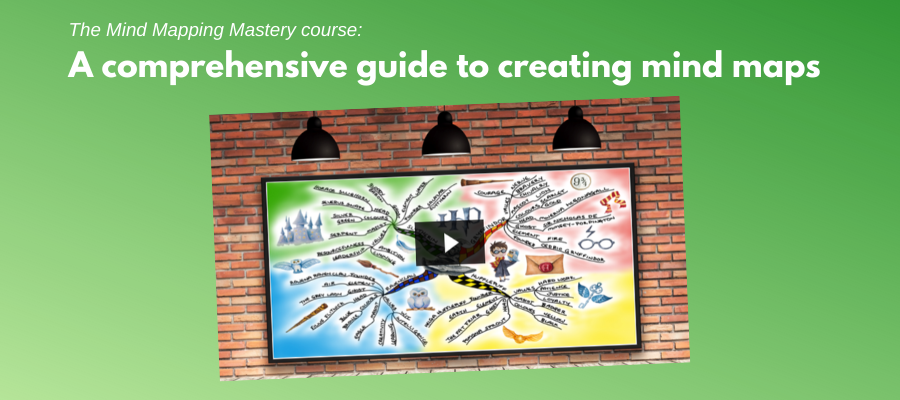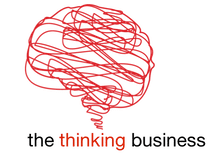
I recently had the opportunity to review Jayne Cormie‘s e-learning program, Mind Mapping Mastery. If you’re looking for a quick, affordable way to learn about mind maps, why they’re so effective and how to produce them by hand, then I highly recommend it.
Whether you’re looking to enhance your thinking and planning in your personal life or in your business role, you’ll find Cormie’s instruction to be clear, concise and helpful.
An amazingly qualified instructor
 Cormie isn’t just anybody who decided to publish a mind mapping e-course. She’s actually a highly trained visual thinking professional. Cormie is the founder and managing director of The Thinking Business Ltd., which is a global training company specializing in thinking skills. Sh’s a fully qualified Buzan Licensed Instructor in mind mapping, speed reading and memory skills, with over 25 years in mind mapping. She was trained by and co-facilitated with the creator of mind maps, Tony Buzan. I teach mind mapping, creative thinking, strategic thinking and business storytelling to some of the world’s biggest companies including Disney, Microsoft, Hormel, UNICEF, World Health Organisation, Pfizer and the European Commission.
Cormie isn’t just anybody who decided to publish a mind mapping e-course. She’s actually a highly trained visual thinking professional. Cormie is the founder and managing director of The Thinking Business Ltd., which is a global training company specializing in thinking skills. Sh’s a fully qualified Buzan Licensed Instructor in mind mapping, speed reading and memory skills, with over 25 years in mind mapping. She was trained by and co-facilitated with the creator of mind maps, Tony Buzan. I teach mind mapping, creative thinking, strategic thinking and business storytelling to some of the world’s biggest companies including Disney, Microsoft, Hormel, UNICEF, World Health Organisation, Pfizer and the European Commission.
In terms of a professional pedigree, Cormie is undeniably a mind mapping expert and a highly skilled instructor.
What’s contained in Mind Mapping Mastery
Cormie begins by explaining what a mind map is, how to read one and how to create one, step-by-step. She also provides a helpful overview of how to select keywords (first-level topics) to begin your mind map and what to do if you run out of room (create “multi-maps”).
The rest of the course walks you through creating a wide variety of types of mind maps, including:
- Brainstorming mind maps,
- Problem-solving mind maps,
- Decision-making mind maps,
- Planning mind maps,
- Taking notes using mind maps,
- Studying with mind maps, and
- Communicating with mind maps.

The course also contains an extensive gallery of mind maps to inspire you with what’s possible with this powerful type of visual thinking. This addresses one of the primary challenges that non-mind mappers face: How can I use this new-to-me tool? What can I accomplish with it? How-to instruction only goes so far; you must also show learners what’s possible and the range of results they can create.
Finally, Mind Map Mastery includes a community gallery, where students can share their creations with each other.
I frequently judge a course based on how much I learn from it. Naturally, that requires that I put on my newbie hat – to view the program as someone who has never been exposed to mind mapping would. Here are two ideas I gleaned from Mind Mapping Mastery:
Creating multi-maps
In the world of software-produced mind maps, the concept of multi-maps is well known and understood. If you have a mind map that’s getting too complex, a number of the leading programs make it easy to “break off“ a topic and its subtopics into a separate, linked mind map.
But oddly enough, I never gave any thought to doing something similar with hand-drawn mind maps. In this case, you face the constraint of the size of a piece of paper. It’s easy to run out of room. Continuing the map on a second or third page makes perfect sense!
Why you should number your first-level topics
When it comes to sharing mind maps with others, I’ve always made the assumption that everyone “knows“ that they should read them in a clockwise direction, starting with the first-level topic at the one-o’clock position. But Cormie‘s instruction has helped me to realize that maybe that’s assuming too much. A simple solution she suggests is to number the first-level of topics, which makes their sequence much more explicit.
Conclusion
 As someone who writes extensively about mind mapping and is also a producer of e-learning programs, I am especially sensitive to how information is presented. Doing so in a learning environment is much different than just writing an article or a book. There are many other factors you need to keep in mind about the way in which people learn.
As someone who writes extensively about mind mapping and is also a producer of e-learning programs, I am especially sensitive to how information is presented. Doing so in a learning environment is much different than just writing an article or a book. There are many other factors you need to keep in mind about the way in which people learn.
You also have to make sure that the knowledge you’re presenting is relevant and valuable, clear and concise – easily digestible by distracted learners. Of course, the narrated explanations must also be supported by engaging and relevant visuals. Copious examples and templates help people learn by example.
Cormie’s Mind Mapping Mastery course is a winner on all counts.
To learn more about this excellent program, visit Cormie’s course web page.

Leave a Reply